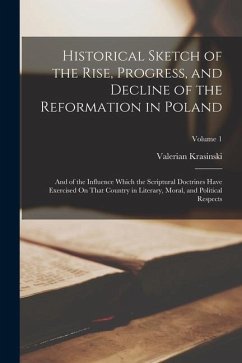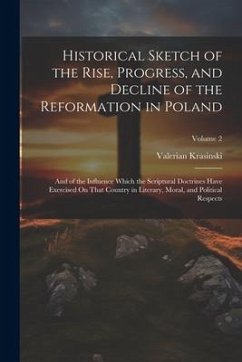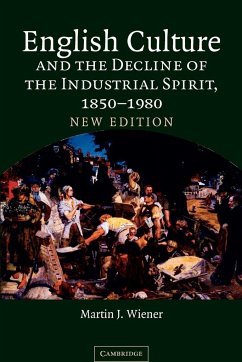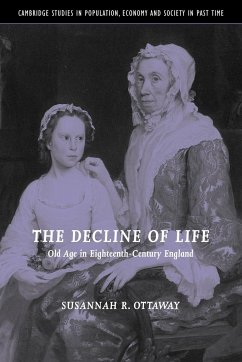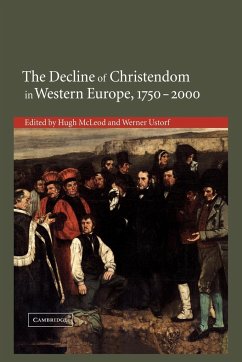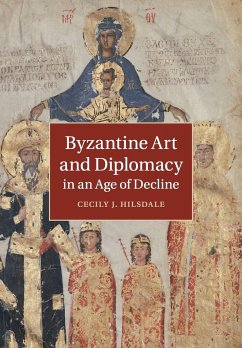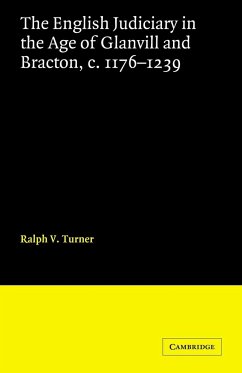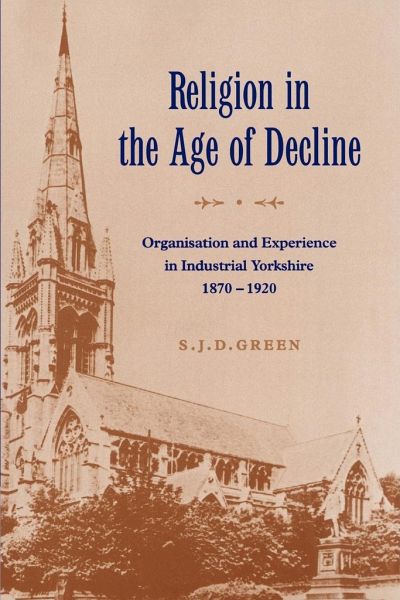
Religion in the Age of Decline
Organisation and Experience in Industrial Yorkshire, 1870 1920

PAYBACK Punkte
32 °P sammeln!
An original study of religion in late Victorian Britain and its apparent twentieth-century decline.The seemingly inexorable decline of Christianity in Britain has long fascinated historians, sociologists and churchmen. They have also been exasperated by their failure to understand its origins or chart its progress. Sceptical both of traditional accounts and of their more recent rejection by revisionist writers, S. J. D. Green concentrates scholarly attention for the first time on the 'social history of the chapel' in a characteristic industrial-urban setting. He demonstrates just why so many c...
An original study of religion in late Victorian Britain and its apparent twentieth-century decline.
The seemingly inexorable decline of Christianity in Britain has long fascinated historians, sociologists and churchmen. They have also been exasperated by their failure to understand its origins or chart its progress. Sceptical both of traditional accounts and of their more recent rejection by revisionist writers, S. J. D. Green concentrates scholarly attention for the first time on the 'social history of the chapel' in a characteristic industrial-urban setting. He demonstrates just why so many churches were built in late Victorian Britain, who built them, who went to them, and why. He evaluates the 'associational ideal' during its period of greatest success, and explains the causes of its decline. In this way, Religion in the Age of Decline offers a fresh interpretation of the extent and the implications of the decline of religion in twentieth-century Britain.
Table of content:
Part I. Providing the Means: 1. The environment and its constraints: economic revolution, social transformation and spatial evolution; 2. The many houses of God: churches, church-building and church extension in the industrial town; 3. The burden shared: the changing political economy of religious organisations; Part II. Drawing in the People: 4. The unfolding of the associational ideal: auxiliary organisations and ambitious societies; 5. Learning advanced: the Sunday School Movement, pedagogical innovation and the theory of juvenile religious development; 6. Salvation extended: conversion, revivals and the unending mission to the people; Part III. The Trials of the Religious Life: 7. Worship exalted and experience eclipsed: liturgical orderliness, dutiful observance and the making of a modern Christian witness; 8. Christianity within and beyond the churches: the pattern of devotion and the authenticity of expression; 9. The forward march of the Christian churches halted? Organisational stasis and the crisis of the associational ideal in early twentieth-century religious institutions; Conclusion; Bibliography.
The seemingly inexorable decline of Christianity in Britain has long fascinated historians, sociologists and churchmen. They have also been exasperated by their failure to understand its origins or chart its progress. Sceptical both of traditional accounts and of their more recent rejection by revisionist writers, S. J. D. Green concentrates scholarly attention for the first time on the 'social history of the chapel' in a characteristic industrial-urban setting. He demonstrates just why so many churches were built in late Victorian Britain, who built them, who went to them, and why. He evaluates the 'associational ideal' during its period of greatest success, and explains the causes of its decline. In this way, Religion in the Age of Decline offers a fresh interpretation of the extent and the implications of the decline of religion in twentieth-century Britain.
Table of content:
Part I. Providing the Means: 1. The environment and its constraints: economic revolution, social transformation and spatial evolution; 2. The many houses of God: churches, church-building and church extension in the industrial town; 3. The burden shared: the changing political economy of religious organisations; Part II. Drawing in the People: 4. The unfolding of the associational ideal: auxiliary organisations and ambitious societies; 5. Learning advanced: the Sunday School Movement, pedagogical innovation and the theory of juvenile religious development; 6. Salvation extended: conversion, revivals and the unending mission to the people; Part III. The Trials of the Religious Life: 7. Worship exalted and experience eclipsed: liturgical orderliness, dutiful observance and the making of a modern Christian witness; 8. Christianity within and beyond the churches: the pattern of devotion and the authenticity of expression; 9. The forward march of the Christian churches halted? Organisational stasis and the crisis of the associational ideal in early twentieth-century religious institutions; Conclusion; Bibliography.






